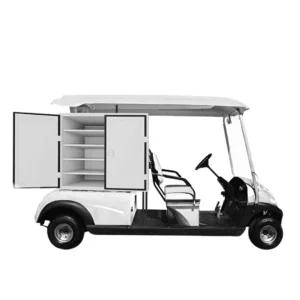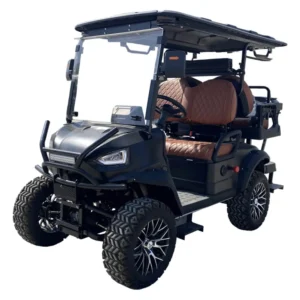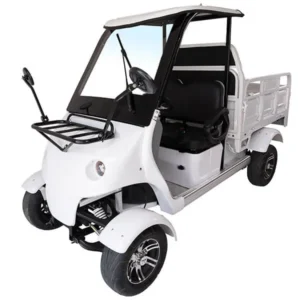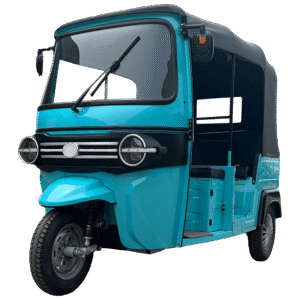Utility Golf Carts: The Ultimate Guide to Versatile Workhorses on Wheels
Utility golf carts have become indispensable vehicles far beyond the greens of a golf course. Whether you’re maintaining a large property, managing a warehouse, or working on a farm, utility golf carts provide a reliable, efficient, and cost-effective solution for transportation and hauling tasks.
In this guide, we’ll explore everything you need to know about utility golf carts—what they are, the types available, their benefits, features to consider, gas vs electric models, and where to find utility golf carts for sale.
What Is a Utility Golf Cart?
Unlike traditional golf carts designed primarily for carrying golfers and their bags, utility golf carts are modified or purpose-built for transporting goods, equipment, or multiple passengers across diverse terrains.
These vehicles typically feature:
-
Cargo beds or tool racks
-
Lift kits and rugged tires
-
Increased payload capacities
-
Enhanced suspension systems
They are widely used in agriculture, landscaping, construction, campus maintenance, airports, and more.
Popular Uses of Utility Golf Carts
Utility golf carts are known for their adaptability. Common industries and applications include:
1. Agriculture and Farming
Farmers use utility golf carts with dump beds to transport feed, hay, tools, and even livestock equipment.
2. Golf Course Maintenance
Ground crews use utility carts to transport irrigation systems, mowers, and fertilizers across large green spaces.
3. Warehousing and Industrial Use
Facilities and factories use electric utility golf carts to move products or parts efficiently with zero emissions indoors.
4. Colleges and Universities
Campus staff use them for maintenance, landscaping, and security patrols.
5. Recreational Properties and Parks
Ideal for transporting guests, supplies, or equipment across large recreational areas.
Types of Utility Golf Carts
Utility golf carts come in a variety of styles, depending on the intended use:
A. Electric Utility Golf Carts
-
Eco-friendly
-
Quiet operation
-
Lower maintenance
-
Ideal for short-range travel (up to 40 miles per charge)
-
Suitable for indoor and light-duty outdoor use
B. Gas-Powered Utility Golf Carts
-
Higher torque and power
-
Longer range
-
Ideal for hilly terrain and heavy-duty tasks
-
More maintenance compared to electric
C. Diesel Utility Carts
-
Used in very heavy-duty commercial or industrial settings
-
High towing and hauling capacity
-
Typically used in off-road or rugged areas
D. 4×4 Utility Golf Carts
-
Designed for all-terrain use
-
Comes with four-wheel drive
-
Great for farms, forests, or large construction sites
Top Brands Offering Utility Golf Carts
When shopping for the best utility golf carts, several trusted brands dominate the market:
1. Club Car
-
Known for durability and performance
-
Offers both gas and electric models
-
Notable model: Club Car Carryall Series
2. EZGO
-
Popular among commercial users
-
Offers custom features and strong warranties
-
Notable model: EZGO Express S4 & MPT
3. Yamaha
-
Known for reliable gas-powered carts
-
Good suspension and load capacity
-
Notable model: Yamaha UMAX Rally 2+2
4. Polaris GEM
-
Electric low-speed vehicles (LSVs)
-
Street-legal options
-
Great for industrial and campus use
Key Features to Consider
Choosing the right utility golf cart depends on your specific needs. Here are the top features to evaluate:
1. Payload Capacity
Measured in pounds—can range from 500 lbs to over 1,200 lbs.
2. Towing Capability
Essential if you need to haul trailers or equipment.
3. Bed Size and Material
Aluminum or steel beds, often in flatbed or dump bed configurations.
4. Drive System
2WD for flat terrain, 4WD for off-road or uneven environments.
5. Battery Range (for Electric Models)
Most electric utility carts provide 20–40 miles per charge.
6. Speed and Safety
Top speeds usually range from 15–25 mph. Look for seat belts, lights, and signal systems.
7. Customization Options
Utility racks, canopies, enclosed cabs, weather protection, and tool holders can often be added.
Gas vs Electric Utility Golf Carts: Which One Is Better?
When selecting between gas vs electric utility carts, it comes down to how and where you intend to use the vehicle.
| Feature | Gas-Powered | Electric |
|---|---|---|
| Power | More powerful; better for hills | Quiet, sufficient for flat terrain |
| Range | Longer (150+ miles/tank) | Shorter (20–40 miles/charge) |
| Maintenance | Requires oil, fuel filters | Low maintenance |
| Noise | Noisy | Silent operation |
| Emissions | Emits CO2 | Zero emissions |
| Ideal Use | Outdoors, farms, hills | Indoor, campuses, flat areas |
Pro Tip: If you plan to use the cart mostly indoors or in quiet areas, an electric utility golf cart is ideal. For rough terrain or long distances, opt for a gas utility cart.
Utility Golf Carts for Sale: Where to Buy?
If you’re looking to buy, here are your top options:
A. Authorized Dealerships
-
Provide warranties and financing
-
Offer both new and used utility golf carts
-
Brands: Club Car, EZGO, Yamaha
B. Online Marketplaces
-
eBay, Craigslist, Facebook Marketplace
-
Good for used carts
-
Riskier—check condition and maintenance history
C. Specialty Golf Cart Retailers
-
Sites like GolfCartResource.com, Motobuys, or BuggiesUnlimited.com
-
Great selection and customization options
D. Local Equipment Auctions
-
Government and commercial surplus auctions often include well-maintained used utility carts
Price Range for Utility Golf Carts
Prices can vary based on features, powertrain, and brand.
| Type | Price Range (New) | Price Range (Used) |
|---|---|---|
| Electric | $8,000–$14,000 | $3,000–$7,000 |
| Gas | $9,000–$15,000 | $4,000–$8,000 |
| 4×4 | $12,000–$18,000 | $6,000–$10,000 |
Note: Customizations, batteries, and accessories can increase the price.
Maintenance Tips for Utility Golf Carts
To ensure longevity and optimal performance:
Electric Models:
-
Charge batteries regularly
-
Maintain proper water levels in lead-acid batteries
-
Check wiring and brakes
Gas Models:
-
Change oil, spark plugs, and filters regularly
-
Inspect belts, brakes, and fuel lines
-
Store in a covered area to prevent rust
Benefits of Utility Golf Carts
✔ Cost-Efficient
Cheaper to buy and operate than trucks or ATVs.
✔ Eco-Friendly
Electric models emit no pollutants.
✔ Maneuverability
Perfect for navigating tight or crowded spaces.
✔ Quiet Operation
Ideal for campuses, neighborhoods, and resorts.
✔ Versatile
Haul, tow, transport—whatever you need.
Are Utility Golf Carts Street Legal?
In many states, low-speed vehicles (LSVs) with features like headlights, turn signals, mirrors, and seat belts can be made street-legal for roads with speed limits of 35 mph or less.
Check your local DMV or transportation authority for specific regulations in your area.
Conclusion
Utility golf carts have evolved into powerful, multi-purpose vehicles that serve a broad range of industries and applications. Whether you’re managing a large estate, operating a business, or maintaining a school campus, a utility golf cart can save time, reduce labor, and improve operational efficiency.
When shopping, carefully consider your needs—payload, terrain, gas vs electric, and your budget. And don’t forget to explore options for used and customized models.
Frequently Asked Questions (FAQs)
1. How fast can utility golf carts go?
Most travel between 15–25 mph. Speed can be modified with upgrades.
2. Can I use utility golf carts in the rain?
Yes, especially with weather enclosures and waterproof components.
3. What is the lifespan of a utility golf cart?
With proper care, 10–15 years is typical.
4. Are financing options available?
Yes, most dealerships offer financing for new and used carts.
5. Can I install solar charging on an electric cart?
Yes, solar roof kits are available to extend battery range.
utility golf carts
Showing all 4 results




